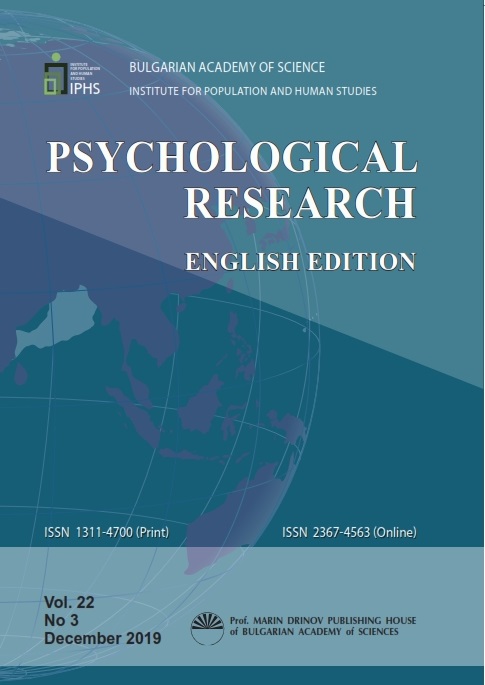Tolerance/Intolerance of Ambiguity: Assessing Its Perceived Importance
Tolerance/Intolerance of Ambiguity: Assessing Its Perceived Importance
Author(s): Katya Stoycheva, Kalina PopovaSubject(s): Social Sciences, Psychology
Published by: Институт за изследване на населението и човека - Българска академия на науките
Keywords: tolerance/intolerance of ambiguity; creative motivation; need for achievement; university students.
Summary/Abstract: A scale for measuring attitudes towards ambiguity tolerant (AT) and ambiguity intolerant (AInT) behaviors was constructed for use with adolescents. It was initially applied in a concurrent study of high school students, their teachers, and their parents (Stoycheva 1998, 2003) that examined the development of ambiguity tolerance. The research question arose concerning whether its utilization could be extended to a new age group (university students) and to a new research topic (creativity). 43 men and 87 women aged 19-34 from three universities in Sofia who participated in a correlational study of creativity (Stoycheva et al. 2008) provided data for analysis. In addition to the scale, they were measured for ambiguity tolerance, creative motivation, and the need for achievement. The scale yields two scores for the importance ascribed to AT and AInT behaviors. The good internal reliability of the scale, the relationship between its two scores (weak, negative correlation), and the pattern of preferences (AT behaviors being regarded as more important) were replicated across samples. This was also the case concerning the relationship between individual differences in ambiguity tolerance and the importance ascribed to AInT behaviors. The scale also proved useful in differentiating between two motivations relevant to creativity. While there were positive correlations between creative motivation and the need for achievement, there were differences in the way they related to the importance university students reported for AT and AInT behaviors. Our results encourage the application of the scale in broader studies of adolescents and young adults that investigate their educational and vocational choices, professional preferences, work-related attitudes and aspirations, norm-relating behavior, and engagement with creative activities.
Journal: Психологични изследвания
- Issue Year: 22/2019
- Issue No: 3
- Page Range: 629-640
- Page Count: 12
- Language: English

